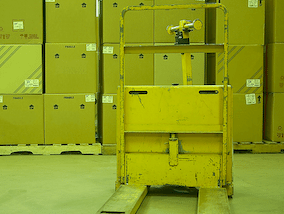The concept of “endless aisle” has been discussed in ecommerce for years. Many online merchants have watched Amazon’s rise to market domination and believe their own path to success lies in replicating what they see as a killer business plan.
But retailers and experts now understand the drawbacks to electronic aisles of seemingly unlimited amounts of drop-shipped products. As far back as 2010 researchers were questioning the idea. Many retailers, such as Brookstone, which declared bankruptcy in 2014, have not had much success using long-tail strategies.
Meanwhile, even Amazon itself doesn’t truly supply limitless products. Instead, such long-tail offerings are left for its third-party sellers to handle while the ecommerce giant focuses its own energies on the best selling and most profitable goods.
Part of the reason for this rethinking comes from “the paradox of choice,” wherein customers overwhelmed by product variety end up just window shopping. In many cases, reducing the number of choices actually increases sales. This insight is leading Procter and Gamble to shed 100 of its brands, to concentrate on the top-performing 80 to 90 that supply roughly 90 percent of its profits. Sears Canada is taking steps to refocus on carefully researched products and brands.
Another drawback is that endless aisles of drop-ship products are not without overhead for retailers. Despite marginal costs being lower in the distribution tail, they’re still present and include the macro costs of supplier on-boarding and data exchange as well as specific costs for item setup, cataloguing, and digital asset creation.
It’s clear that a happy medium must be achieved between the two extremes of not-enough and too-much choice, but the term “endless aisle,” with its implications for an infinite water-hosing method to product variation, does not allow retailers to formulate more nuanced approaches.
What then should retailers do if they’d still like to use drop shipping to expand their product selection beyond its current limits? The answer is to adopt a less-limited aisle approach.
Less-limited Aisle
Less-limited aisle is a concept I’ve contemplated as I’ve watched various retailers struggle to successfully implement an endless aisle retail strategy.
I define “less-limited aisle” as follows.
The strategic use of drop shipping for matching the demand associated with your retail brand with an expanded, curated assortment in a way that makes sense for maintaining your customer’s experience.
Implementing this kind of strategy is essentially just being smart about your product expansion and drop shipping. Rather than trying to sell tens of thousands of uncurated SKUs and product variations, with a less-limited aisle retailers increase their product offerings by carefully adding only those drop shipped items that will be interesting to their customers and relevant to their overall brand.
Here’s an example of a less-limited aisle strategy.
- Retailer first works with current suppliers to backfill inventory items through drop-shipping.
- Retailer works with current suppliers through drop shipping to (a) expand assortment within a current product, such as more sizes and colors and (b) increase new product offerings from the same trusted brands.
- Retailer uses new drop ship suppliers to test new offerings and new categories. If any of the new products are successful they are added to the permanent catalogue and any new suppliers become permanent trading partners.
Advantages of Less-limited Aisle
For retailers seeking to expand their offerings, there are several advantages to a less-limited aisle.
First, it enhances your role as a demand aggregator. One of the important functions of retailers is to be the expert, curator, and consultant that customers turn to. Without this, retailers are superfluous to the brand-consumer relationship. This is what an uncurated endless aisle accomplishes: turning the retailer into a mere box shifter.
Second, a less-limited aisle allows you to take a more nuanced approach to product expansion. Retailers have various inventory needs. They might, for example, simply want more supply, or they might be trying to avoid too much supply. Or maybe they’re interested in only experimenting with product expansion, or developing new strategies to deal with returns. Regardless, a less-limited aisle approach allows you to prioritize your own particular concerns.
Third, it allows you to provide more relevant (and successful) product offerings. By focusing on current products first, you are able to add more colors, sizes, and styles to your best sellers, increasing sales and reducing opportunity cost. Additionally, having a curated range of products allows you to make product suggestions that are more directly related to your customers’ needs and interests. And properly balancing your aisle also allows you to develop brand authority in niche markets.
Fourth, less-limited aisles require less overhead. Offering an endless array of products in every size, color, and type is expensive and more suited for ecommerce marketplaces than individual retailer sites.
Fifth, having a more finite pool of suppliers allows you to develop better relationships with your trading partners. This is especially important in drop shipping, where the more functional and integrated a relationship is, the higher the margins due to increased inventory visibility, lower cancellation rates, better return coordination, lower opportunity costs, and better coordination on ecommerce sales tax issues.
Finally, placing clearly defined limits on your product assortment helps to mitigate opportunity costs associated with the paradox of choice.
Product Expertise
There’s no one-size-fits-all retail strategy. Look closely at your business needs and goals to decide what will work for your situation.
Endless aisle can be a successful model for companies running marketplaces, such as Amazon, Ebay, and Walmart. For retailers whose brand is directly associated with product expertise, however, it’s important to maintain your standards even at the long end of the tail.
A less-limited aisle strategy is a powerful tool for accomplishing that goal.




